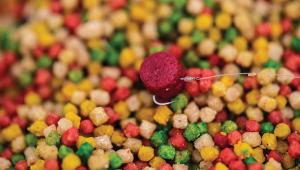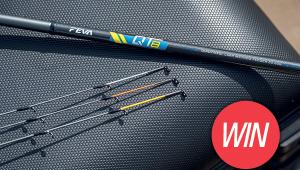Spring Into Action

We look forward to the anticipation of spring as relief from the long cold days of winter, but spring itself can be an unpredictable beast and there is still a good chance of some very cold weather. We have even seen snow in spring before now!
And this is why I think spring can be one of the most difficult times to fish with any consistency. You need to decide on which methods and tactics will play a part in your approach and how they will tie into the overall day. Often the cold nights and warm days can have you scratching your head as to which way to go about it.
It’s all too easy to overdo the feeding because we feel the spring sunshine on our backs and yet the fish are still huddled up in winter mode; with temperatures still fluctuating, along with changeable weather conditions, it can be difficult to read at times.
The flip side is sitting in a cold north-easterly wind and being cautious with the feed, only to find the water temperature has just crept up enough in the preceding days for the fish to want to feed.
As with all fishing, stacking the odds in your favour is the way to go and in springtime for me this is a combination of taking a gamble whilst being cautious at the same time.
So, I thought it would be a good idea to bring the cameras along to share a few key bits of advice to help you maximise your catch rate in this changeable time of year, with a look towards more positive approaches as the weather continues to warm up.
Tip One – Plumb The Depths
So, before we get into rigs, bait and all other things technical, the crucial factor to spring fishing is selecting the correct depth in which to target the fish. Arguably this is the trickiest choice you will face on the day and one that can often see you replumbing your peg throughout the session. To begin with I always like to fish in what I call my ‘safe depth’, which is at least two and a half feet.
This doesn’t sound too deep in the scheme of things, but I think this offers the fish enough water above their head to feel confident to feed, but also it is shallow enough to help minimise liners and foul-hooked fish.
Also, the beauty of this depth is it allows me to feed various sized particles – whether that will be groundbait, hard pellets, corn or any other bait that I feel may work for what I’m looking to target. Furthermore, this versatility allows me to vary the bait I’m choosing to feed to attract fish into the peg without running the issue of venturing into shallower water should foul hookers become a problem and risk not getting any bites at all. 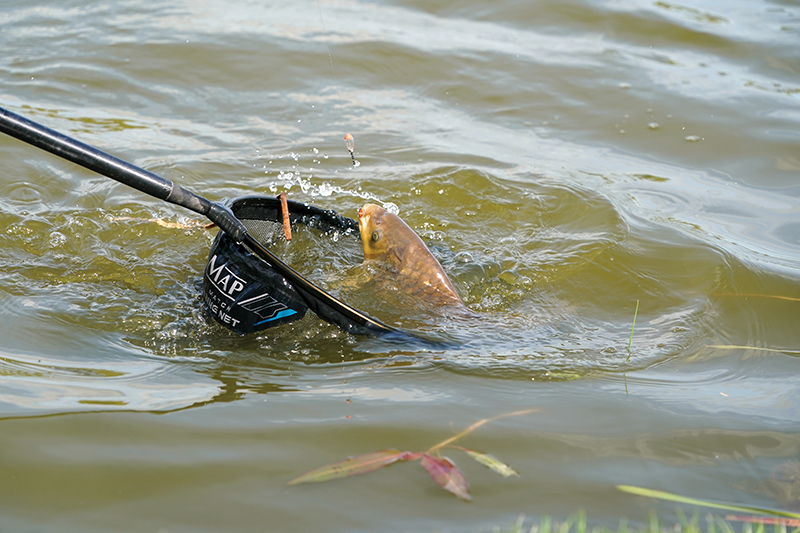
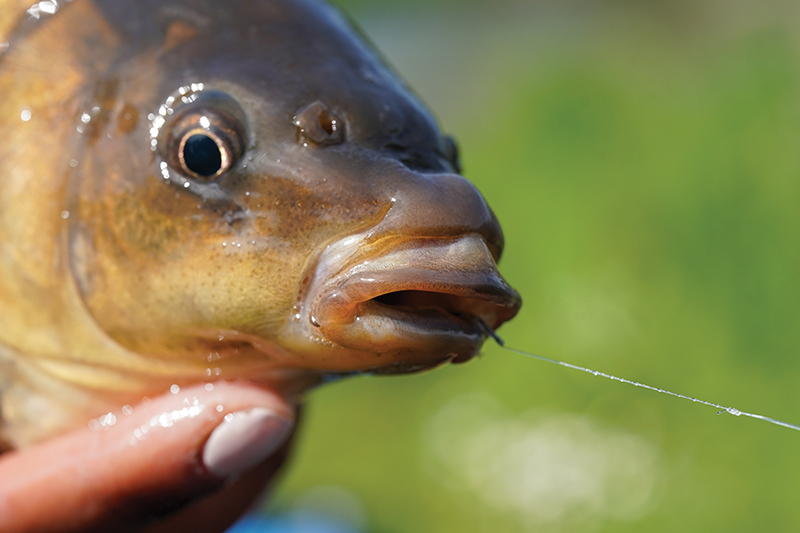 One key bit of advice though, is to not be scared to put the plummet on and start again. If you cannot pin those fish to the bottom, simply find a shallower spot, if possible, to help slow the peg down and eliminate the issue. No matter what the time of year, foul hooking is the last thing you want going on in your peg!
One key bit of advice though, is to not be scared to put the plummet on and start again. If you cannot pin those fish to the bottom, simply find a shallower spot, if possible, to help slow the peg down and eliminate the issue. No matter what the time of year, foul hooking is the last thing you want going on in your peg!
To help avoid this I often use a jigger float. As the fish constantly move up and down in the water column, chasing the loose feed, anglers needed a handful of rigs set at different depths to keep in contact with the fish.
Being inline and loaded, the jigger sits perfectly cocked on the top, while the main line runs down the centre of the float.
This allows you to drop the hook bait vertically through the water directly underneath the float. The rig can then be fished to full depth, on the drop, held at one constant depth or jigged up and down in the swim, making the hook bait rise and fall. It has made shallow fishing idiot-proof, as it enables you to fish at a variety of depths using just one rig, rather than many.
Tip Two – Bait Choices
Now that we have an idea of depth, the second tip revolves around bait choice.
Although more selective baits such as hard pellets are now coming to the fore, it’s often still necessary to feed smaller particles initially to drag some fish into the area and help them gain confidence. Remember the water is still pretty cold, especially closer to the lake bed. This is when micros and groundbait become a key part of my armoury.
My preferred mix now that the water temperature is on the up is a 50:50 combination of Green Swim Stim and Marine Halibut. This can be a fantastic way of drawing fish in and creating competition in the peg at the same time without overfeeding them. During the early stages of the match, I find this can be a great way to create a response, prior to moving to more selective baits such as hard pellets or corn, when the fish really get on the feed. Also, these bigger, harder baits will help pick out the bigger stamp fish such as carp and those bigger F1s that Lindholme, where we are today, now abounds with. 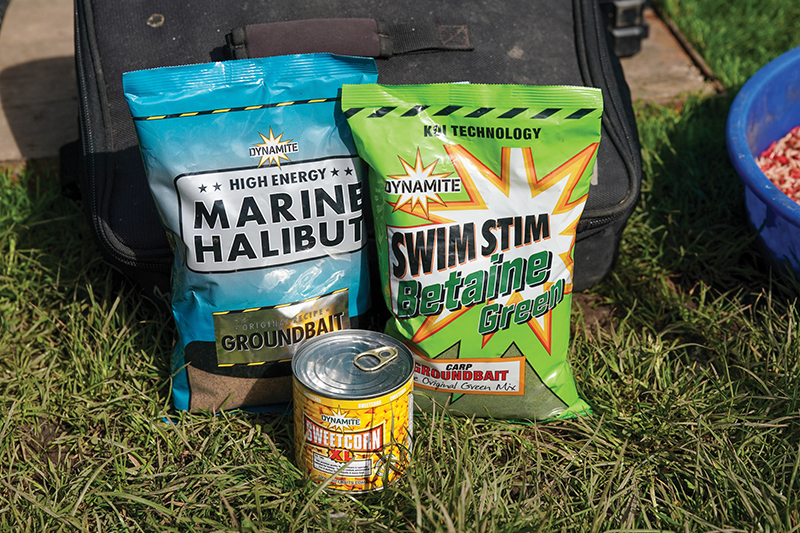
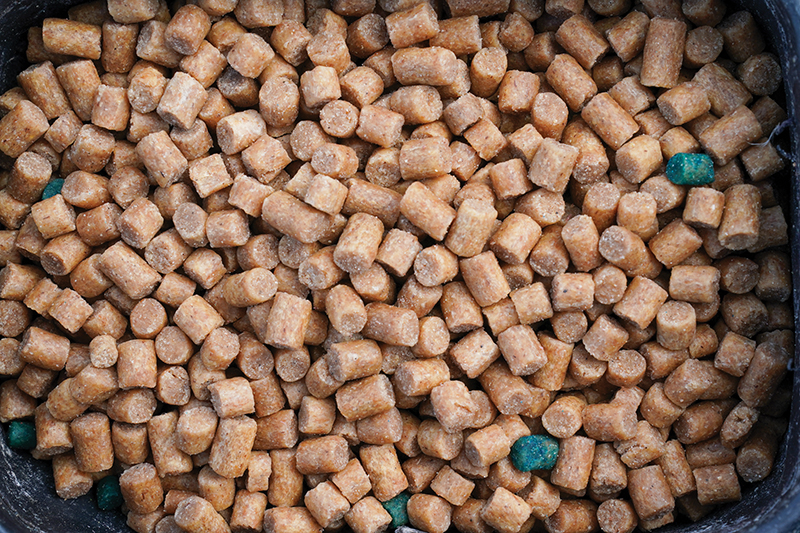 Another thing, however, is to bear in mind the power of natural baits – worms and casters or maggots. The beauty of baits such as these is that they are palatable to all number of species found in commercial venues. The benefit of this is that you’re always fishing in a ‘clean peg’. As smaller species are mopping up the bait that is uneaten by the carp and F1s, this means you are always fishing in a clean peg and avoiding a build-up of bait, which allows the carp in particular to come in and graze rather than actively compete. By getting the bigger fish to compete, their guard is lowered, and they are more likely to take the hook bait as a result.
Another thing, however, is to bear in mind the power of natural baits – worms and casters or maggots. The beauty of baits such as these is that they are palatable to all number of species found in commercial venues. The benefit of this is that you’re always fishing in a ‘clean peg’. As smaller species are mopping up the bait that is uneaten by the carp and F1s, this means you are always fishing in a clean peg and avoiding a build-up of bait, which allows the carp in particular to come in and graze rather than actively compete. By getting the bigger fish to compete, their guard is lowered, and they are more likely to take the hook bait as a result.
The other plus to this is that often with natural baits you can feed a much greater quantity, allowing you to make noise and draw fish into your swim. Noise is critical for me, as a lot of my spring fishing incorporates shallow fishing and noise and bait falling is key to making this approach work effectively.
Tip Three – Seek The Snags
Next up is to keep in mind we are approaching spawning time. Often this is when fishing in areas close to reeds and cover can be fundamental to amassing a big weight.
The beauty of this is that there are plenty of places for the fish to hide and therefore feed confidently. This, coupled with the sanctuary from what can often be the bright spring sunshine, shows why it is such a great area of the peg to target, especially when the fish are likely to be heading there anyway in preparation to spawn. These pre-spawning fish are also eager to pack on a few pounds prior to the act, so they can be that little bit easier to catch at times.
For me, often the only way to fish in these often snaggy havens is shallow. By minimising the amount of line, it gives me the best chance of landing the fish from what can often be considered ‘danger zones’.
If there is cover in the edges at this time of year, you can plunder it for much more than your usual last hour bagging session. Especially where those often tricky F1s are concerned!
Tip Four – Don’t Drain Each Line
My 4th tip is to try not to push the peg too much. This relates to what I said earlier about low overnight temperatures.
Often it can be a slow start to begin with, with the peg getting stronger as the session progresses. This can help later in the day by not ‘blowing the peg’ in the early stages. By nurturing a number of swims, you can reap the rewards later on in the match. 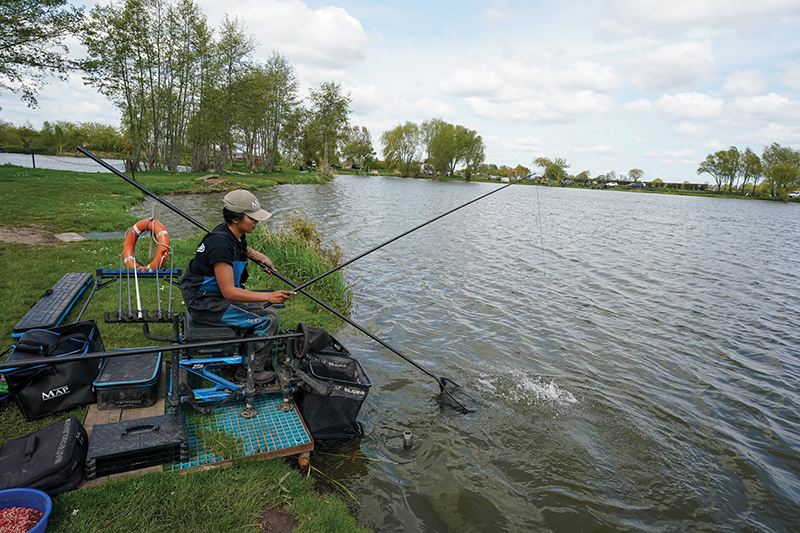
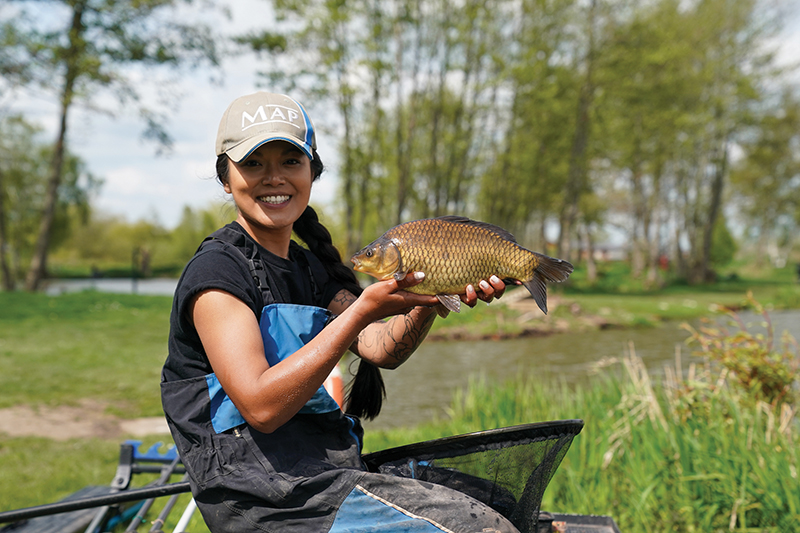 Early doors can often be a case of nicking the odd fish from around the swim, before settling on a couple of main lines later on, once the fish are competing more aggressively. This is something I incorporate into many of my matches, often by saving a shallow line until later in the session. By priming this line for a couple of hours and gathering numbers of fish, I can catch really well later on. Whereas, if I kept dropping on it and thinning the fish out, so to speak, I’ll never have that good run as they simply won’t have the confidence to come into the peg as there will never be enough competition for the bait as I’m continually taking fish out of the peg by catching them.
Early doors can often be a case of nicking the odd fish from around the swim, before settling on a couple of main lines later on, once the fish are competing more aggressively. This is something I incorporate into many of my matches, often by saving a shallow line until later in the session. By priming this line for a couple of hours and gathering numbers of fish, I can catch really well later on. Whereas, if I kept dropping on it and thinning the fish out, so to speak, I’ll never have that good run as they simply won’t have the confidence to come into the peg as there will never be enough competition for the bait as I’m continually taking fish out of the peg by catching them.
Tip Five – Beef Up The Tackle
Last up is to pay attention to your tackle choices.
Although we’re a bit late out of the cooler months this year, it is important to step your kit up accordingly, so as to get the job done. For example, I don’t feel there is any advantage in continuing to fish too light in terms of hooklengths. Now that temperatures are on the up, I’ll be fishing a minimum of 0.13mm hooklengths on all rigs for F1s. This durability is often needed when amassing big weights as the numbers of fish being caught can put a lot of stress on the rig.
The same applies should I be fishing for skimmers. This is because bigger weights are now needed to make them a viable ‘winning option’, so catching them fast is the only way to go. 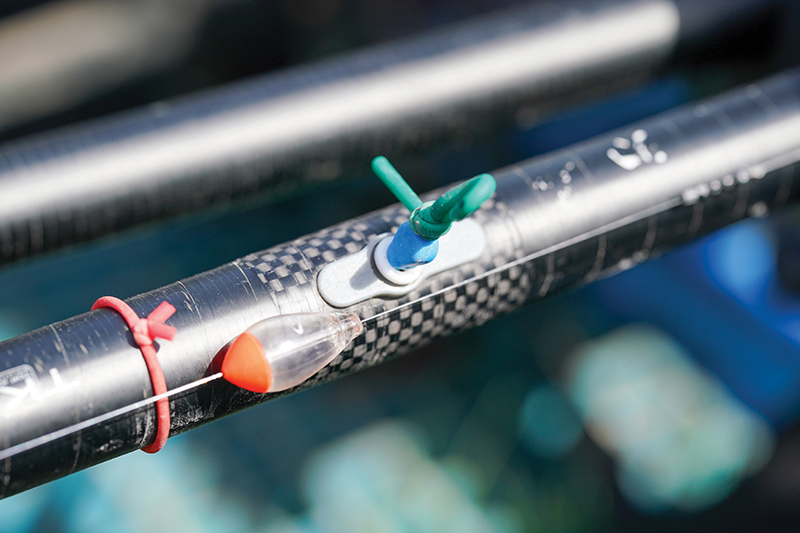 I feel that positive, aggressive tackle is needed to help maximise my catch rate and amass a weight big enough to compete. So, even though it isn’t a case of getting the ‘riot gear’ out, it is important to fish in a durable, reliable manner to help get on with the job at hand and plunder the fish when they’re feeding in the peg.
I feel that positive, aggressive tackle is needed to help maximise my catch rate and amass a weight big enough to compete. So, even though it isn’t a case of getting the ‘riot gear’ out, it is important to fish in a durable, reliable manner to help get on with the job at hand and plunder the fish when they’re feeding in the peg.
The same goes with elastic choice. I don’t want something too soft, so that the fish are running all around the lake. But, at the same time it’s important not to be bumping fish off by using too strong an elastic either.
By finding that happy medium, it can often be the best way to ensure both speed and also making sure they stay on the hook. If in doubt, you can always go a little lighter and use a puller kit, this then sees you having the best of both worlds.
So there are my five top tips for that tricky ‘spring into summer’ change point.
It isn’t always about piling bait in everywhere, but with a bit of thought with regards to tackle, bait and approaches you can have some fantastic days’ sport on the bank, even if the weather is still slightly on the chilly side for this time of year. 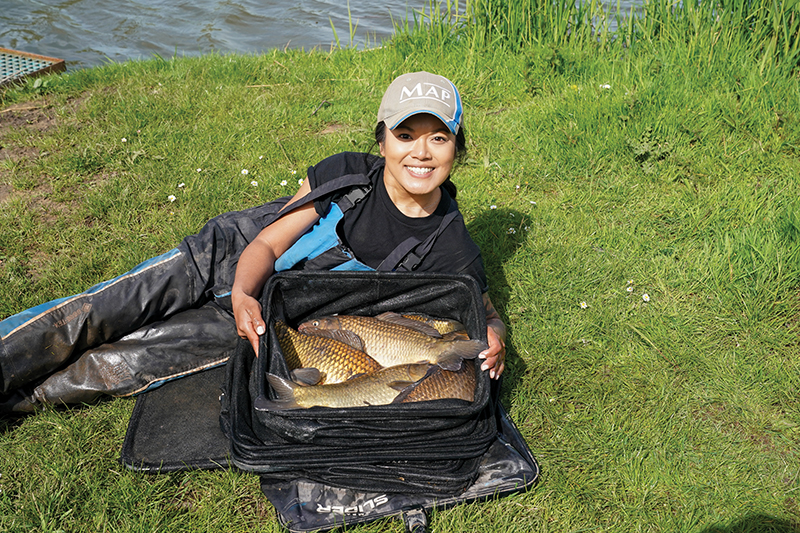
- Log in or register to post comments





